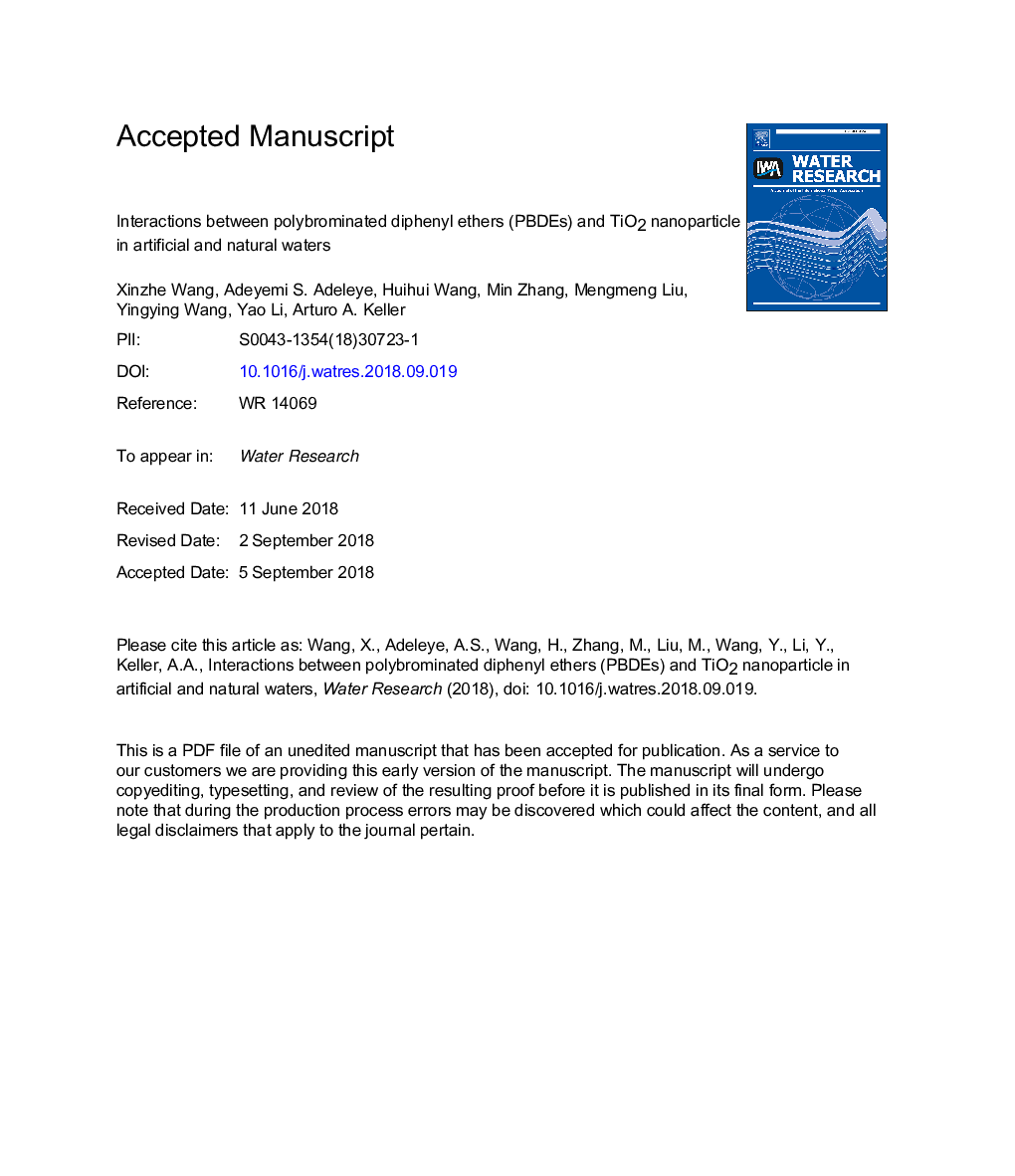| کد مقاله | کد نشریه | سال انتشار | مقاله انگلیسی | نسخه تمام متن |
|---|---|---|---|---|
| 9951503 | 1701044 | 2018 | 37 صفحه PDF | دانلود رایگان |
عنوان انگلیسی مقاله ISI
Interactions between polybrominated diphenyl ethers (PBDEs) and TiO2 nanoparticle in artificial and natural waters
دانلود مقاله + سفارش ترجمه
دانلود مقاله ISI انگلیسی
رایگان برای ایرانیان
کلمات کلیدی
موضوعات مرتبط
مهندسی و علوم پایه
علوم زمین و سیارات
فرآیندهای سطح زمین
پیش نمایش صفحه اول مقاله

چکیده انگلیسی
Polybrominated diphenyl ethers (PBDEs) are widely used as flame retardants in a variety of products, including textiles. PBDEs are thus exposed to the natural environment, including wastewater, waterbodies and sediments (at different phases of products' lifecycles), where they will interact with other pollutants. Studies on the interactions between organic pollutants and engineered nanoparticles (NPs) in natural waters are rare. In this study, we investigated the effects of two common PBDEs-BDE 47 and BDE 209-on the physicochemical properties and colloidal stability of TiO2 NP in simple aqueous media and two natural waters (river water and wastewater). Upon the addition of BDE 47 and BDE 209, the zeta (ζ) potential of TiO2 NP increased in magnitude in artificial waters and in natural waters (river water and wastewater), but the magnitude of influence on the NP's surface charge was specific to each natural water considered. Despite the presence of high content of natural organic matter in river water (DOCâ¯=â¯15.8â¯mg/L) and wastewater (DOCâ¯=â¯26.1â¯mg/L), low levels of the PBDEs (e.g. 0.5â¯mg/L) strongly impacted the surface charge and hydrodynamic diameter of TiO2 NP. Both PBDE congeners suppressed the agglomeration of TiO2 NP in the presence of monovalent and divalent cations, and in both natural waters. BDE 47 exhibited a stronger influence than BDE 209 on the surface charge, hydrodynamic diameter, and agglomeration of TiO2 NP in both artificial and natural waters. As such, the interactions between TiO2 NP and the PBDEs can increase the exposure of aquatic organisms to both pollutants. Infrared spectroscopy showed the importance of the aromatic ether groups in the adsorption of PBDEs to TiO2 NP.
ناشر
Database: Elsevier - ScienceDirect (ساینس دایرکت)
Journal: Water Research - Volume 146, 1 December 2018, Pages 98-108
Journal: Water Research - Volume 146, 1 December 2018, Pages 98-108
نویسندگان
Xinzhe Wang, Adeyemi S. Adeleye, Huihui Wang, Min Zhang, Mengmeng Liu, Yingying Wang, Yao Li, Arturo A. Keller,